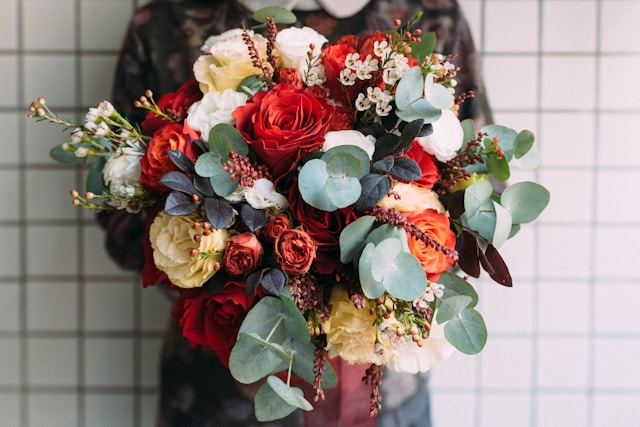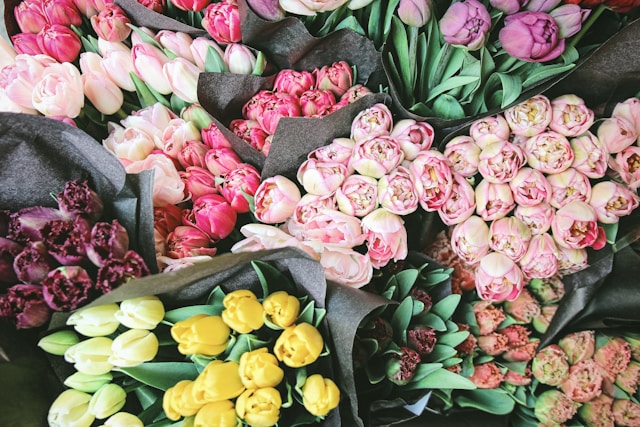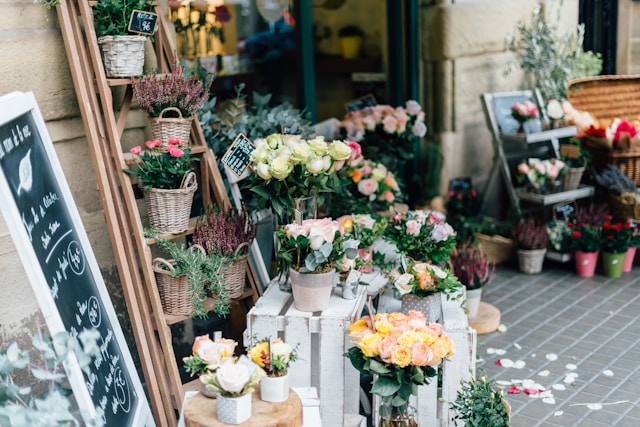Spring is a season of renewal, bursting with vibrant colors and fragrant blooms. It’s the perfect time to bring a touch of nature’s beauty into your home with a stunning spring bouquet. Whether you’re a novice florist or a seasoned pro, these tips and tricks will help you create an arrangement that captures the essence of spring.
Choosing the Right Flowers
Spring offers a diverse array of flowers, each bringing its own unique charm to your bouquet. Here are some popular choices:
- Tulips: Available in nearly every color, tulips are a spring staple. Their elegant shape and variety of hues make them perfect for any arrangement;
- Daffodils: Bright and cheerful, daffodils add a sunny touch to your bouquet. Their distinctive trumpet-shaped blooms are a classic sign of spring;
- Hyacinths: Known for their sweet fragrance, hyacinths come in vibrant shades of blue, purple, pink, and white;
- Lilies: With their large, showy petals, lilies make a striking focal point in any bouquet;
- Peonies: These lush, full blooms are highly sought after for their romantic and delicate appearance;
- Ranunculus: With their layers of paper-thin petals, ranunculus flowers add texture and elegance to your arrangement;
- Cherry Blossoms: These delicate pink blooms are synonymous with spring and add a soft, ethereal quality to your bouquet.
Selecting Complementary Colors
Creating a visually appealing bouquet involves choosing colors that complement each other. Here are some popular color schemes for spring bouquets:
- Monochromatic: Use different shades of the same color for a sophisticated and cohesive look. For example, a bouquet of various pink flowers, from pale blush to deep magenta, can be stunning;
- Analogous: Select colors that are next to each other on the color wheel. Combining blue, purple, and pink flowers creates a harmonious and calming effect;
- Complementary: Choose colors opposite each other on the color wheel for a vibrant and dynamic bouquet. Pairing yellow daffodils with purple hyacinths makes a striking contrast;
- Pastels: Spring is synonymous with soft, pastel hues. Combine light pinks, lilacs, and baby blues for a classic springtime feel.
Preparing Your Flowers
Before arranging your flowers, it’s important to prepare them properly to ensure they stay fresh and beautiful for as long as possible.
- Trim the Stems: Cut the stems at a 45-degree angle to increase the surface area for water absorption. Use a sharp pair of floral shears or a knife to avoid crushing the stems;
- Remove Foliage: Strip away any leaves that will be below the water line in your vase. This prevents bacteria from growing and helps keep the water clean;
- Condition the Flowers: Place the flowers in a bucket of lukewarm water for a few hours to hydrate them thoroughly before arranging.
Arranging Your Bouquet
Now that your flowers are prepped, it’s time to create your bouquet. Follow these steps for a professional-looking arrangement:
- Start with the Focal Flowers: Begin by placing your largest and most striking flowers in the vase. These will serve as the focal point of your bouquet. Arrange them in a triangle shape for a balanced look;
- Add Secondary Flowers: Next, add medium-sized blooms around the focal flowers. These should complement the focal flowers in color and shape;
- Fill with Filler Flowers: Fill in any gaps with smaller, filler flowers and greenery. This adds texture and depth to your arrangement;
- Vary the Heights: Ensure that the flowers are at different heights to create a natural and organic look. Avoid having all the blooms at the same level;
- Rotate the Vase: As you arrange, rotate the vase to ensure the bouquet looks good from all angles;
- Final Touches: Once you’re satisfied with the arrangement, give the stems a final trim to the desired height and add fresh water mixed with flower food.
Maintenance Tips
To keep your spring bouquet looking fresh for as long as possible, follow these maintenance tips:
- Change the Water: Refresh the water in the vase every two days, and add a little more flower food each time;
- Trim the Stems: Re-cut the stems every few days to keep them absorbing water efficiently;
- Remove Wilting Flowers: As individual flowers start to wilt, remove them from the arrangement to prevent them from affecting the fresh blooms;
- Avoid Direct Sunlight: Place the bouquet in a cool spot away from direct sunlight and drafts.
Creating a stunning spring bouquet is a rewarding and enjoyable way to bring the beauty of the season indoors. With the right flowers, thoughtful color combinations, and careful preparation, you can craft an arrangement that brightens any space and lifts your spirits. Happy arranging!


